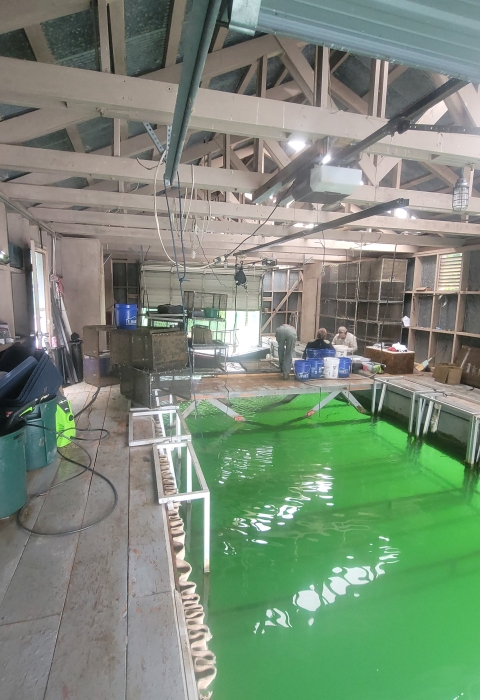The mussel boat house got a massive cleaning and rehabilitation overhaul when power was run to the structure structure
Something temporarily or permanently constructed, built, or placed; and constructed of natural or manufactured parts including, but not limited to, a building, shed, cabin, porch, bridge, walkway, stair steps, sign, landing, platform, dock, rack, fence, telecommunication device, antennae, fish cleaning table, satellite dish/mount, or well head.
Learn more about structure in May.
- A second slide rail was added to the mussel house to support the heavy duty 110v winch the station had for pulling effluent sump pumps (repurposed).
- New mounts and rail slides were added to support the upgrades mussel winch system.
- The supplemental walking plank and floating platform barge are in place for ease of lake work and staff safety.
- Sump pump and pressure washer installed and mounted suspended from rafters
- Building pressure washed
- Secondary sump pump installed for cage cleaning and mussel gathering
- A floor fan is a significant upgrade for the building when temps are high and the work gets tough
- A substantial portion of the month was dedicated to cleanup and preparation work to make up for years of not having power to do a good job of cleaning the boat house
- Scrubbing, sorting and cleaning to make the boat-house work organized and efficient. Hatchery staff can actually clean and prep gear for immediate re-use during inventory and harvest operations
A late start on mussel culture was compensated for with a lot of preliminary setup work, some new tools like water pumps, and a long day working in the water to pull off the first progress step in one main go. Tennessee Wildlife Resource Agency mussel crew with station staff labor assistance had double the walking and working space this year making the mussel work far easier, safer, and faster. The deep clean and organizing really helps the process and having a pressure washer and tools to clean/repair cages on site allowed for immediate turnaround re-use easily saving two days of labor hauling everything back and forth, setup, and cleanup. The majority of the mussels initially planted this year are the result of the in-vitro rearing at the Cumberland River Aquatic Center using fish blood from a number of host species. This was followed up by the rapid building of a new cage and planting some infested host fish a few days later.



